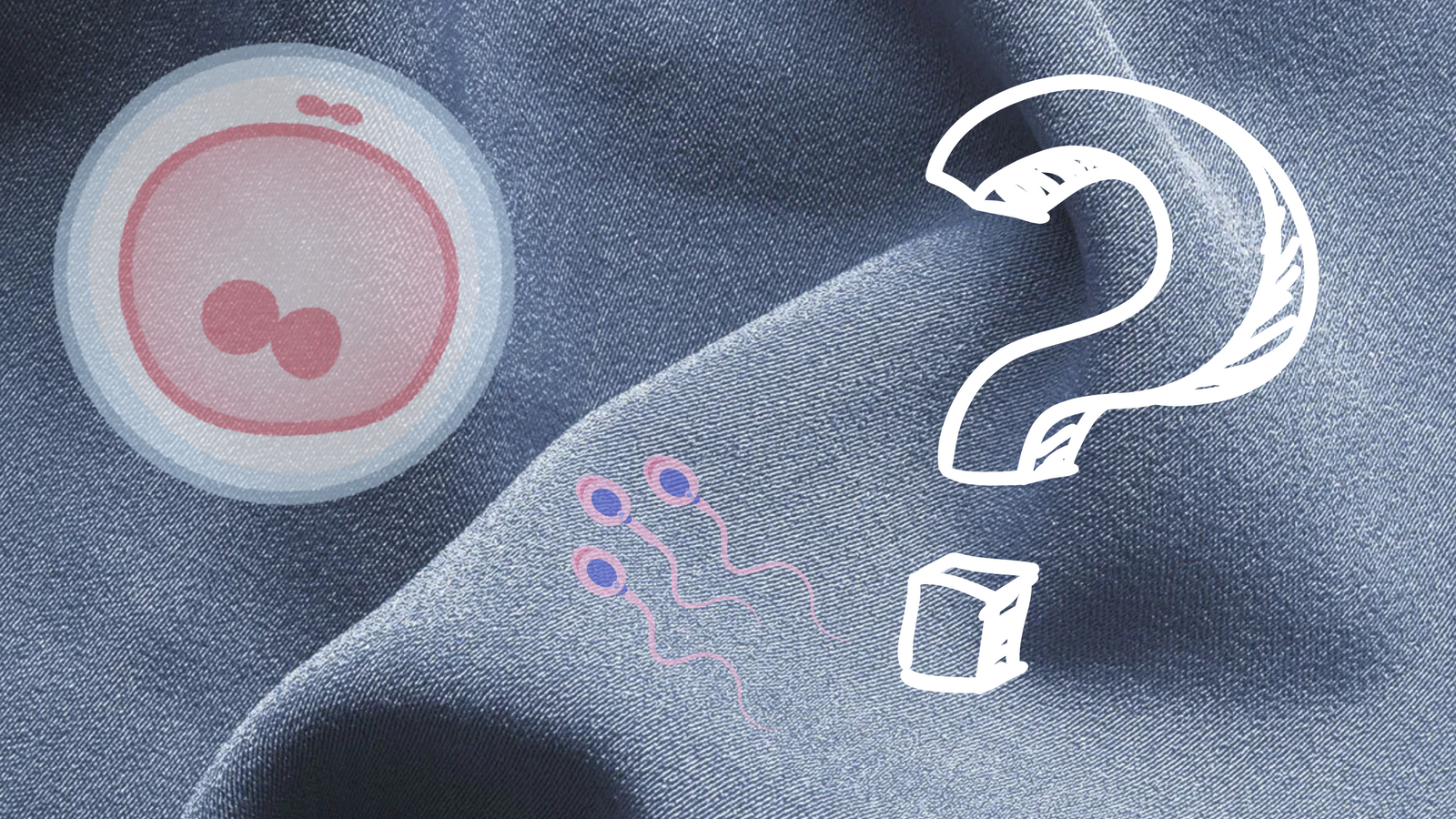Your Cart is Empty
FREE WORLDWIDE SHIPPING! Use code "SUPERNATURAL"
FREE WORLDWIDE SHIPPING! Use code "SUPERNATURAL"

5 min read
Polyester, a synthetic fabric commonly found in clothing, home textiles, and even medical products, has long been a subject of concern when it comes to human health.
While most people focus on the environmental impact of polyester—given its non-biodegradable nature—there's a growing body of research suggesting that exposure to the chemicals used in polyester production might have implications for human fertility. This post will explore the potential connections between polyester and infertility, shedding light on both the chemical exposure it causes and the biological mechanisms that may be affected.
Polyester is a type of plastic made from petroleum-based products, with the most common form being polyethylene terephthalate (PET). PET fibers are widely used because they are durable, inexpensive, and resistant to shrinking and wrinkles. But these synthetic fibers come with a hidden cost, especially when it comes to human health. Polyester is often treated with chemicals during its production, finishing, and dyeing processes. These chemicals can linger on the fabric even after it reaches consumers, leading to exposure through direct contact with the skin.
Polyester fabrics can contain various chemicals such as phthalates, bisphenol A (BPA), and antimony. These chemicals, commonly used in the production of plastics and textiles, have been shown to interfere with hormone function, a phenomenon known as endocrine disruption. Some studies suggest that these hormone-disrupting chemicals might have significant effects on reproductive health, potentially leading to fertility problems.
Phthalates and Fertility
Phthalates are chemicals used to soften plastics and are also present in many polyester products. These compounds have been linked to a variety of health concerns, particularly in relation to the endocrine system. According to a study published in Environmental Health Perspectives, phthalates have been associated with lower sperm counts and motility in men, as well as a reduced likelihood of pregnancy in women. The study suggested that phthalates may impair reproductive function by disrupting the body’s hormonal balance, particularly affecting the production of testosterone in men and estrogen in women.
Bisphenol A (BPA) and Reproductive Health
BPA, another chemical commonly found in plastics, is known for its ability to mimic estrogen in the body. This estrogen-mimicking effect has raised concerns about its potential to contribute to fertility issues, particularly in women. Research published in Human Reproduction highlighted the link between BPA exposure and a decrease in both egg quality and the chances of conception in women undergoing fertility treatments. For men, BPA exposure has been linked to lower sperm concentration and motility, which can reduce fertility. While BPA is more commonly found in hard plastics, it is also present in some polyester-based textiles, especially in dyes and finishing agents used during manufacturing.
Antimony Exposure and Reproductive Health
Antimony is another toxic element used in the production of polyester, primarily as a catalyst in the manufacturing process. Long-term exposure to antimony has been associated with several health risks, including damage to the liver, kidneys, and lungs. According to research published in Environmental Toxicology and Pharmacology, antimony exposure may also impact fertility. Studies suggest that antimony can interfere with the endocrine system, potentially altering hormonal levels and disrupting reproductive functions in both men and women.
While much of the focus has been on male fertility, there’s also evidence that polyester may have a detrimental impact on women’s reproductive health. Long-term exposure to certain chemicals found in textiles, including those in polyester, could lead to irregular menstrual cycles and hormonal imbalances in women. These imbalances can make it more difficult for women to conceive, as they disrupt the delicate interplay of hormones that regulate ovulation and menstruation.
While the potential reproductive risks of polyester are concerning, it’s important to note that polyester exposure is just one factor in a complex web of lifestyle and environmental influences on fertility. Factors like diet, stress, substance use (such as tobacco and alcohol), and overall health are crucial in determining fertility outcomes. Moreover, the amount of time a person is exposed to polyester and the concentration of chemicals in the fabric all play a role in the degree of risk.
Given the potential link between polyester and infertility, it’s wise to take steps to limit exposure, particularly if you're planning to conceive. Here are some practical tips:
Choose Natural Fabrics: Opt for clothing made from natural fibers like cotton, linen, or silk. These fabrics are less likely to contain harmful chemicals like phthalates and BPA. Cotton, in particular, is a great alternative for everyday wear since it's breathable, soft, and less likely to harbor the hormone-disrupting chemicals present in polyester. However, when it comes to activewear, cotton can fall short in terms of performance. It tends to absorb sweat and become heavy, which can leave you feeling uncomfortable during intense workouts.
Consider Performance Fabrics like Mineral-Enhanced Cotton: For activewear, a better alternative would be innovative garments like Dojo's mineral-enhanced cotton leggings. This revolutionary fabric combines the benefits of natural cotton with performance features, offering breathability and comfort while also being enhanced with minerals to support your skin’s health and overall wellness. Unlike conventional polyester-based activewear, mineral-enhanced cotton avoids the chemicals associated with infertility concerns and provides the moisture-wicking and anti-odor properties needed for intense physical activity.
Wash New Clothes: Always wash new polyester clothing before wearing it to remove excess chemicals and dyes that might still be present on the fabric.
Consider Organic and Eco-Friendly Products: Many brands now offer organic and eco-friendly clothing options made from natural fibers or recycled polyester with fewer harmful chemicals.
Mind Your Environment: Pay attention to the materials used in your home, such as bedding and upholstery, which may also contain polyester-based fabrics.
While polyester has become ubiquitous in modern life, its potential impact on fertility should not be overlooked. The chemicals involved in its production and use, such as phthalates, BPA, and antimony, have been shown to disrupt the endocrine system, potentially harming both male and female reproductive health. While more research is needed to fully understand the extent of polyester’s effects on fertility, being mindful of the fabrics we wear and the products we use is a wise step toward safeguarding reproductive health.
For everyday clothing, natural fibers like cotton are a safer alternative, though they may not be the best option for activewear. For those seeking the best of both worlds—performance and health-conscious fabric—Dojo mineral-enhanced cotton offers a chemical-free solution with enhanced properties that support both comfort and fertility. By making informed choices, we can help mitigate the risks and protect our future reproductive health.
Comments will be approved before showing up.

5 min read
It’ll be well known to our audience that Southeast Asia hosts the world’s most popular destinations for yoga retreats, and many of you may well have trips planned for the coming months.
With the lush jungles of Sri Lanka, the peaceful rice terraces of Ubud, or the tranquil beaches of southern India, there’s no better place to immerse yourself in the culture of yoga and meditation.
But there's one unexpected guest making headlines this season - dengue fever.

4 min read
It's fair to say that the cobra, and its meaning, is less well known than some of yoga's other classic poses such as 'downward dog' or the 'dolphin'.
But it's proably the most benefical and effective pose in the entire practice. In fact, if we could only choose one yoga pose to do forever, it would be the cobra. As it's fantastic for spinal-decompression, which has amazing allround benefits for your body.

5 min read
Yoga, an ancient practice renowned for its physical and mental benefits, has evolved over time to incorporate various elements and styles.
A recent intriguing addition is kitten yoga - the feline equivalent of puppy yoga. This unique combination of yoga poses and catty companionship offers a delightful and therapeutic experience.

Use code SUPERNATURAL at checkout